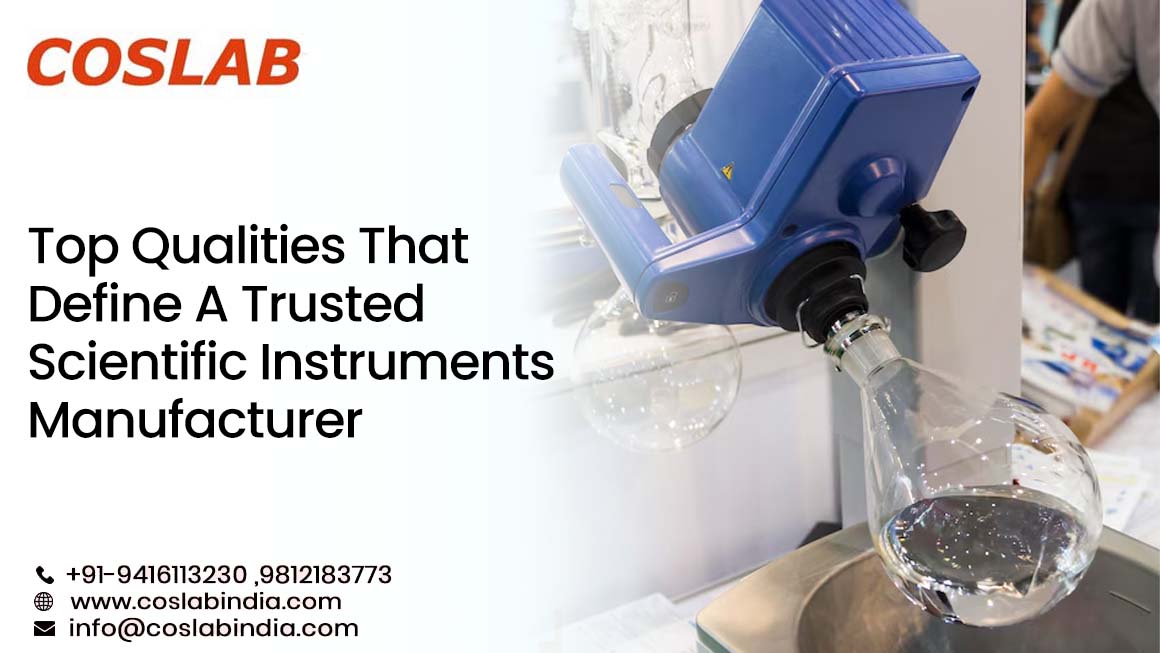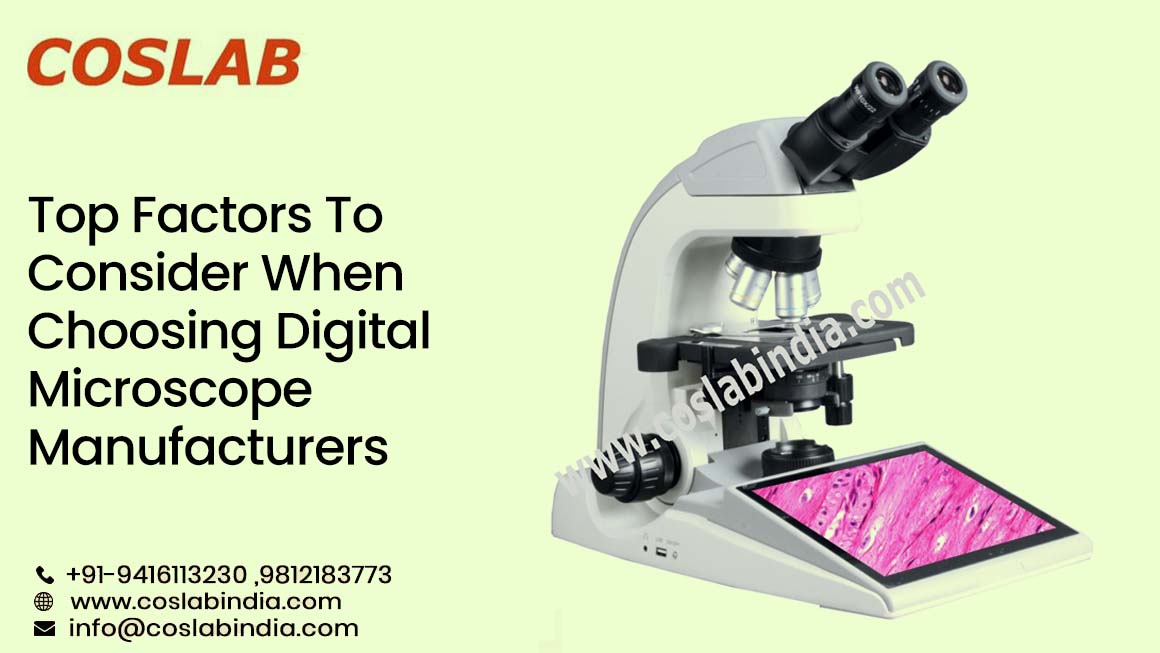
Regular Maintenance Tips For Microscopes From Industry Experts
Microscope Supplier in India - A microscope is important equipment in labs and research and medical institutions. From biological studies to industrial inspections and other scientific research, it is paramount to maintain these tools to deliver accurate results, optimal performance and increase their lifespan. Regular maintenance ensures that the machinery does not fail due to a contaminated lens, misalignment or mechanical problems.
Microscope experts recommend proper storage, cleaning and periodic servicing as the basic tips in their care. This blog discusses the recommended maintenance approaches that ensure long-lasting preservation of the optical clarity and functionality of lenses for your microscope.
The Importance of Maintaining a Microscope's Condition Regularly
Caring for the microscope properly ensures that it remains high-quality, operationally efficient and cost efficient requiring little repairs or replacements. Regular maintenance helps in:
- • Maintaining precision in observations and accuracy in diagnostics and research.
- • Avoiding dust, oil or any other residues from building up on the optical components.
- • Avoiding any misalignment problems and ensuring smooth mechanical functionality of the unit.
- • Increasing the life span of the moving parts, illuminators and lenses.
- • Improving and ensuring consistency in the reliable performance of the microscope over time.
When aiming to have your microscope in the best working conditions, adhere to the following maintenance recommendations from industry experts.
1. Maintain Your Lens’s Cleanness
Lenses are the most delicate and crucial part of a microscope.
Smudges, dust and oil on the lenses distort images and lower the clarity. To clean the lenses follow this procedure:
- • You should always use lens paper or a pristine cloth because those do not leave lint behind.
- • Avoid using your fingers or other body parts because oils may make the lens dirty.
- • If the stain remains, use a small drop of isopropyl alcohol or lens cleaning solution on a microfiber cloth and wipe stitches in spiral movements.
- • Avoid using tissue paper or any other cleaning cloths that are rough. Household cleaning products are also not helpful because all these will scratch the lens further.
- • While the eyepieces and objectives are not in use, keep them covered. This way build up dust would not be a problem.
2. Correct Storage of the Microscope
Inappropriate storage can result in dust build-up, wear and tear from the surroundings and mechanical damage. Neglecting to follow these can make significant alterations down the line:
- • Inactive microscopes should always have a dust cover and be covered at all times.
- • Thus damage from moisture can be eliminated to a certain degree if stored in a humidity free environment where the temperature is monitored.
- • Microscopes placed in direct sunlight or hot regions along with keeping magnets nearby affect the components adversely, needing to be avoided.
- • The objective lens should always be set to the lowest position to store the scope so that rough wear does not happen.
- • While moving the microscope place the support for the bottom in one hand while the other graps the arm. Both hand uses is required to prevent drops.
3. Take Precaution When Handling Optical Elements
Improper handling of microscope components can lead to misalignment and optical interference. The experts recommend the following:
- • Always rotate the nosepiece when changing the objectives rather than touching the lens directly.
- • Refrain from straining the focus knobs because too much tension can break the internal gears.
- • To dust the eyepiece tube, use a blower brush instead of a compressed air can.
- • Always place eyepieces or objectives in a dry, clean case after removing them to ensure they do not accumulate dust or any other foreign body.
4. Ensure the Mechanical Components are well Oil Thorough
The microscopes contain some moving elements that are required for the specific fine tuning and precise adjustments. To maintain the working mechanical parts:
- • From time to time, notice if the coarse and fine focus knobs can move freely. If they are hard to turn, put in a little bit of the suggested oil from the manufacturer.
- • Do not apply too much grease or oil as it can attract dirt which will eventually clog it.
- • Check whether the stage clips and mechanical stage adjusters are able to move smoothly without being pulled.
- • Confirm that the light intensity control knob is able to rotate smoothly to reduce the risk of overheating and flickering.
5. Clean and Check the Light Source
The role of the light system is critical in the imaging process because it contributes to clarity and brightness. Regular maintenance of the light source involves:
- • Dusting the bulb and condenser lens with a dry, clean clothing to remove stains and dust.
- • Renewing dim or flickering bulbs with the correct one from the manufacturer.
- • Scrubbing the mirror (if exists) and light path to make sure there is smooth and distinct illumination.
- • Noted the halogen or LED bulbs should not be touched directly as skin oils can diminish their duration.
6. Ensure Regular Adjustment and Calibration
Routine adjustment ensures measurement accuracy and perfect alignment of the optical system. Expert tips to follow include:
- • Verifying the par focal alignment of all objectives so they remain focused when magnifications are changed.
- • The contrast and resolution provided by the condenser and diaphragm should be checked if they are well adjusted.
- • When employing a digital microscope, the camera settings need to be adjusted for optimum imaging results.
- • For advanced research microscopes, confirm that they are aligned and accurate after 6-12 months of use by scheduling professional servicing.
7. Most Common Errors That Are With Microscope Use
There are many users who, through lack of knowledge, shorten the lifespan of their microscopes.
Try avoiding the following common errors:
- • Putting acetone or ammonia-based cleaner will damage the lens coatings because they are harsh.
- • Keeping the microscope in humid areas which results in the lenses developing mold or fungus.
- • Using too much force on the focus knobs causing optics to become out of alignment.
- • Not removing slides from the stage of the microscope during storage, this may result in damage to the objective lenses.
- • Leaving aside things like dust on the equipment or minimal misalignment which over time could cause bigger problems.
Conclusion
If you have requirement of good quality microscopes, Coslab India is one of the leading Microscope Supplier in India. We have a wide range of Scientific, Instruments Laboratory Equipments Manufacturers, Lab Equipments Suppliers, Educational Lab Equipments and many more.
Most Searched Keywords
- • Microscope Supplier
- • Top Microscope Supplier
- • Best Microscope Supplier
- • Microscope Supplier in India

Top Qualities That Define A Trusted Scientific Instruments Manufacturer
View More

A Complete Guide To Selecting The Best Lab Glassware Manufacturer in India
View More

Choosing The Right Lab Deep Freezer Manufacturers For Reliable Performance
View More

Top Factors to Consider When Choosing Digital Microscope Manufacturers
View More
Subscribe To Our Newsletter
Stay in touch with us to get latest news and discount coupons
